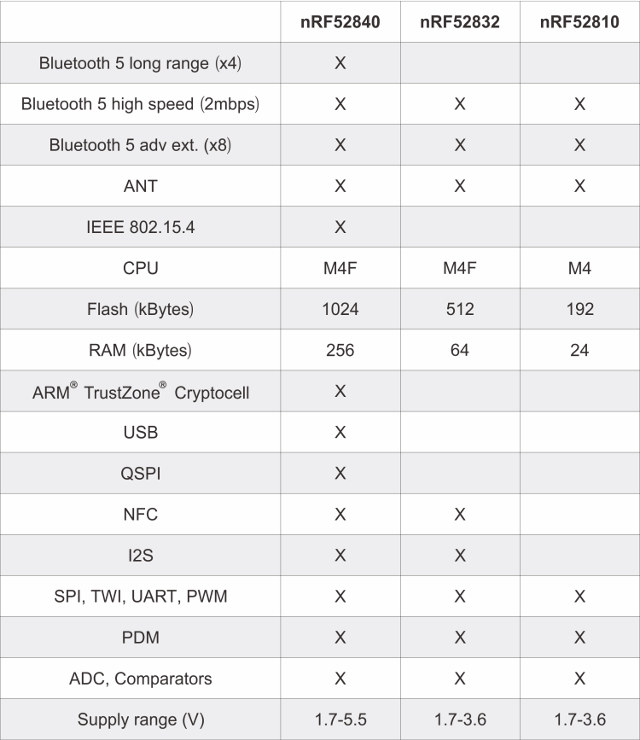Bluetooth 5 was formally introduced earlier this year with promises of four times the range, and twice the speed. Several companies offer chips that are compatible with the new standard, and among them Nordic Semi offers Bluetooth 5 ready solutions via nRF52840, nRF52832, nRF52810 Bluetooth SoCs. However, if you thought – like I did – that all three would provide the same Bluetooth 5 support with just some differences in memory, storage and performance, a comparison table put together by Raytac Corporation will show that among the three SoCs only nRF52840 will support the longer range, while the two older SoC only support the extra bandwidth offered by Bluetooth 5.
 I could find a blog post about a long range demo that confirms the above:
I could find a blog post about a long range demo that confirms the above:
Two nRF52840 Preview Development Kits (PDK) or nRF52832 Development Kits. A combination of the two different kits can also be used. Notice that if the nRF52832 Development Kit is used, the long-range feature will not work as this is only possible with the nRF52840.
That blog post also gives some ideas about the achievable bitrates for different modes:
The throughput measured may vary depending on the environment, but the maximum throughput should be around 1365 Kbps for BLE 5 High Speed, 775 Kbps for BLE 4.2, 128 Kbps for BLE 4.1 and 21.3 Kbps for BLE 5 Long Range. Be aware that there may be some inaccuracies in the measurements.
The main takeaway here is that if you are going to select an SoC, development board, or product with Bluetooth 5 connectivity, long range support may not always be supported, and if that feature is important to your use case, you should make sure the hardware supports it.

Jean-Luc started CNX Software in 2010 as a part-time endeavor, before quitting his job as a software engineering manager, and starting to write daily news, and reviews full time later in 2011.
Support CNX Software! Donate via cryptocurrencies, become a Patron on Patreon, or purchase goods on Amazon or Aliexpress




